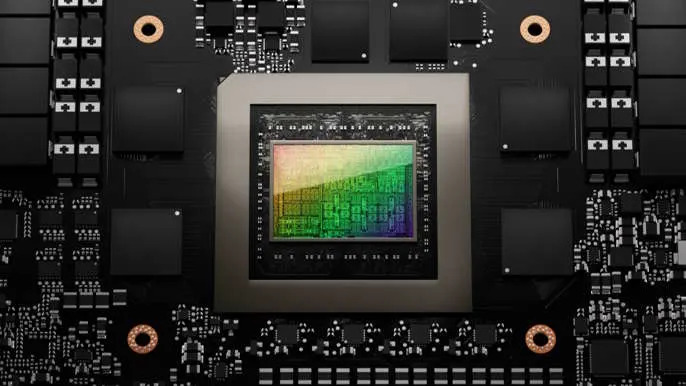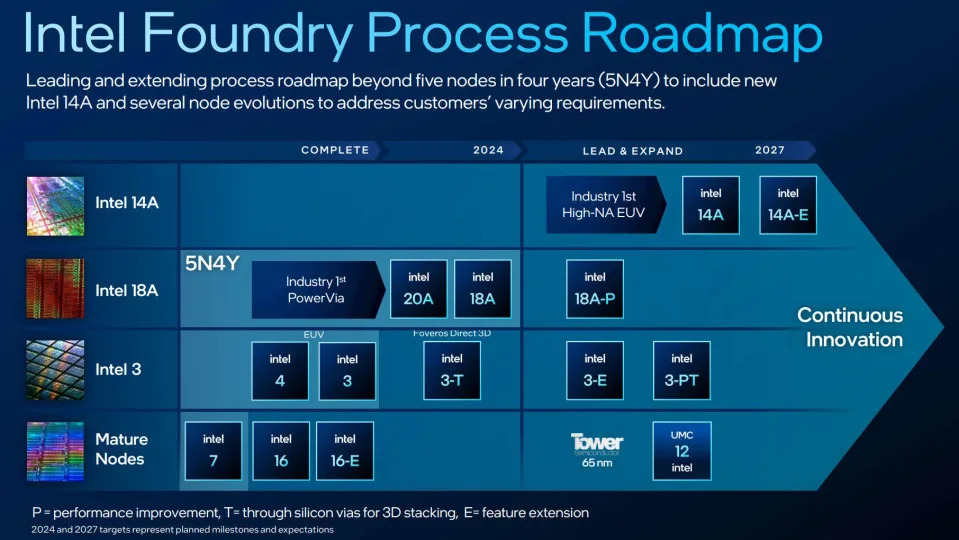
Nvidia Thor SoC for automotive.
Rumoured specs for Nvidia's expected first PC CPU have started floating around the leaky corners of X, with the latest claims suggesting the green team will be plucking off-the-shelf ARM Cortex X5 cores for the processing part of its 2025 chip, all packed in along shiny new Blackwell GPU cores. The weirder rumour, however, is that Nvidia would be using Intel's own fabs to create yet another silicon nail in the x86 coffin.
Nvidia creating an ARM-based processor after all the AI PC noise of this year makes absolute sense, especially with the historical rumours of the green team's partnership with MediaTek in making laptop reference designs. For the company to be able to create laptops entirely built around its own processors and GPUs would be a win, more so if it can also make inroads into the lower-end market that doesn't traditionally jam its discrete GPUs into thin-and-light lappies.
So, Nvidia builds a system on chip (SoC) that uses Arm's processing cores and incorporates its own graphics silicon as an integrated GPU for a low-power/high-performance chip that it can then sell out to other notebook manufacturers. That feels like a no-brainer.
The specs rumour comes from @XpeaGPU on X, which claims that it will be a Cortex X5 CPU cluster, with a Blackwell iGPU, and sport LPDDR6 memory on the package. It also states it will be built using TSMC's N3P node, a claim which was quickly disputed by another fellow X rumour-monger, @Kepler_L2. They claim Nvidia will in fact be using an Intel 3nm production process.
They could simply mean Intel 3, because Intel doesn't specifically have a 3nm node per se. But it could also mean the Intel 3-T update which includes Foveros Direct 3D (PDF warning) stacking capabilities to bring chips or wafers from different foundries together. That would mean Nvidia could still stick with TSMC N3P for the building of its Blackwell GPU cores, and use Intel to create the ARM Cortex X5 cores and the base tile on which they all sit.

Intel Foundry Process Node Roadmap
There have been rumours for a while that Nvidia might look to Intel as an alternative foundry partner to TSMC, with some suspecting that different GPU lines might be manufactured at Intel. This would have been strange, given the different packaging methods the two foundries use, and would have meant extra work porting designs from one production facility to another. But if it's just using Intel to build out the processing component, and maybe the interposer, that's suddenly a lot more plausible.
All of this, however, would mean no custom cores for Nvidia, where both Qualcomm and Apple have gone down that route for their own new silicon. But that's not necessarily a bad thing for the green team. Plucking pre-made cores from Arm's catalogue means not having to mess around architecting your own processor cores—which is the same simple process it's used in the automotive space where the Nvidia Drive platform uses standard ARM Neoverse cores—though it means maybe not being able to so tightly control power levels, or add in specific units to help deal with x86 emulation layers.
Apple touted that as something its own custom chips brought to the table, and was at least partly why Rosetta was so effective in translating x86 apps for its M-series chips. The expectation is that Qualcomm has maybe done something similar with its Oryon cores for the Snapdragon X Elite processors, especially with Microsoft claiming Prism will be just as good for Windows as Rosetta was for iOS.
There is also a certain pleasing symmetry to Nvidia pairing its Blackwell GPU architecture with the ARM Cortex X5 CPU cores, given they are codenamed Blackhawk.
So, when can we expect to see Nvidia's own CPUs hit the market? According to Michael Dell (Mr. Not-just-a-clever-name founder of Dell Technologies) we should "come back next year" to see what its place in the AI PC market is. He made the quip in a Bloomberg interview where he sat alongside Jen-Hsun Huang.
But whether this means Nvidia laptops in the same way we have Apple laptops, where it controls the whole hardware ecosystem, we don't know. Maybe the green team is just planning on creating SoCs for other laptop manufacturers to get it finally embedded in the thin-and-light market without discrete GPUs, but I'm sure it would be hard for Nvidia to resist at least making a MacBook-y reference design.
There have also been rumours it's working with MediaTek on a handheld gaming SoC outside of its potential place in the next-generation of Nintendo Switch. So, here's hoping for a new Shield, too.

Nvidia's suspected 2025 processor is now rumoured to be built by Intel using off-the-peg Arm cores. Yes, an Nvidia chip built by Intel
Feels kinda weird Intel's foundry ambitions could help bring about the demise of the x86 chip.
